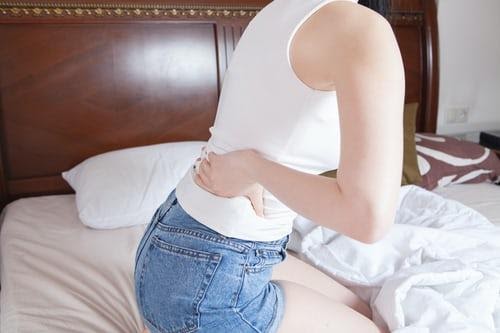Are you suffering from low back discomfort? It’s not uncommon. Do not be afraid. Don’t be scared. You can learn to master your lower back.
The advice you get from therapists, doctors, or chiropractors could be confusing, or even deceiving. They’re not trying to deceive you. They could be considering back pain from an uninformed perspective.
Before you commit to a program of treatment with the pills like Prosoma 500mg start by learning some of the fundamental facts regarding your discomfort and your lower back. Even if you require assistance from chiropractor, physical therapist or medical professional the treatment you receive will be more efficient if you’re taking the necessary steps to aid yourself.
I have a lot of time explaining the low back realities for my clients. It is a good idea to begin by understanding the concept. Here are some of the main ideas I’d like to see all my patients knew:
Things you should know about low back pain
It is a feeling that occurs within the brain and not joints, muscles, or discs. However, this doesn’t mean that the pain will be “all in your head”. The basis for pain is in the signals being sent out by your body. If you alter the signals, your experience of pain will alter. Alter the way in which the brain process the signals, and the sensation of pain will change too.
The brain makes an interpretation of pain based on the information coming into the body including joints, muscles, ligaments and organs. That means that rarely is there one specific site within the body that you could pinpoint then declare “Aha! There’s the cause of the pain.”
Doctors frequently consider the intervertebral disk to be the cause of lower back pain. This goes against principle #2 in the previous paragraph. It’s not a complete aberration as well. The discs can be subjected to a great deal of tension, and are also brimming in nerve endings – nerve endings which can transmit messages of pain to the brain. Pregarica used to cure nerve damage.

Over 30% of people – both those who have lower back pain as well as with no back pain – experiences some tear and wear on those discs in the back called intervertebral. If you’ve had an MRI you’ll be able to see the disc. Radiologist may refer to it as degenerated, herniated or bulging, or use any different word.
As most people suffer from disc injury, the appearance of your discs in an MRI does not exactly correspond to the degree of pain that you’re feeling. It’s a tricky diagnosis situation. It is possible to have very poor discs with little pain, or just slightly damaged discs and lots of discomfort. It is also possible to experience pain on the other part of the disc or in a position over or below your most painful disc. The MRI examines the structure of the disc but isn’t a diagnostic test.
It means that a lot of patients are going through an MRI.
There’s lots of research done by scientists about the benefits chiropractic adjustments (also called spinal manipulation) to treat low back discomfort. In the majority of studies, it’s found that adjustments can be beneficial but in other studies, they don’t provide any benefit. It’s a challenging field to study since there are so many variables to consider. The type of patients suffering from low back pain who are being studied, the types of adjustments offered along with their frequency and time frame of treatment; if additional treatment such as Prosoma 350mg is offered and so on.
There’s not much evidence for the claim that adjustments (manipulation) cause harm to those with back pain.
Treatment for low back pain is Pain O Soma 500mg. On the other hand it has not been as rigorously researched than adjustments. Similar to the studies of adjustments, this kind of research is incredibly difficult to carry out, and has shown different outcomes.
This is a bit of bad news that back pain can turn into an ongoing, long-term issue. This isn’t the norm and many people experience some form of back pain. They find an approach to relieve it and stay free of discomfort over the long term. But, often the moment you begin to experience problems with your lower back it may linger or come back in a later time.
This is why lower back pain could become an ongoing issue. When you experience an attack of back pain, some harm is caused to the structures of the lower back. Although the pain temporary disappear, the structures haven’t fully completely healed. Your back may not recover its former ability to hold your daily, day-in and day-out. It’s not difficult for back pain to return.
This is why the majority of experts are of the opinion that the work you perform to care for your back is vitally essential.
However, even though there’s widespread agreement that exercising is essential; there’s not much agreement regarding how to determine the “what, when, how, and how much” of a workout program to treat low back pain.
Sit-ups, curl-ups or crunches may cause more harm than they do good. However, when you perform these exercises, the majority of the time you’re working the wrong group of abdominal muscles. Additionally, you could be placing extra pressure on your discs and other lower back structures.
There’s a faster, safer method to build core strength alternatively: the plank position. The body is stretched out on the floor with your weight on your elbows and toes. Make use of your abdominals to keep your entire body in a straight line from your the feet up to your neck. (You might need to locate the image via the web.) It’s not as easy as it appears. You should hold the position for fifteen seconds. Repeat the exercise once per day. Once 15 seconds is effortless, increase it to 30 seconds each day.
Don’t perform “pelvis tucking” exercises. A few examples are standing against the wall and lowering you back to the wall sitting on your stomach and pressing the backside of your back down to the floor. Similar to curl-ups and sit-ups or crunches, these workouts are still routinely recommended for the health of your lower back. They are more likely to cause backfires. They exert more pressure on discs. If you’re able to reduce your back’s height the spine isn’t able to effectively absorb forces from vertical angles (like gravity.)
A lumbosacral-support belt may occasionally be beneficial. It cinches your waist around your waist and relieves the strain off your lower back. It’s possible that wearing a belt to support your back helps relieve discomfort. In other cases it does not alleviate the pain, but it shields the back and keeps the back from getting any worse.
A belt with a support strap can be beneficial when you are doing difficult activities. Such as lifting and bending or driving in a vehicle.
Another form of mechanical stress on the back of the low part occurs in the event that you transfer your weight from side-to-side. This occurs with every step as you walk. Also, if you’re standing and your weight shifts across to one side.
So, ensuring you have a better control of the side-to-side shifting of your weight is a crucial to protect your back.




![Bellisima Bites Collagen Gummies [#1 Anti-Aging Gummy] Achieve Your Dream Skin!](https://www.glitco.com/wp-content/uploads/2023/05/results-150x102.jpg)